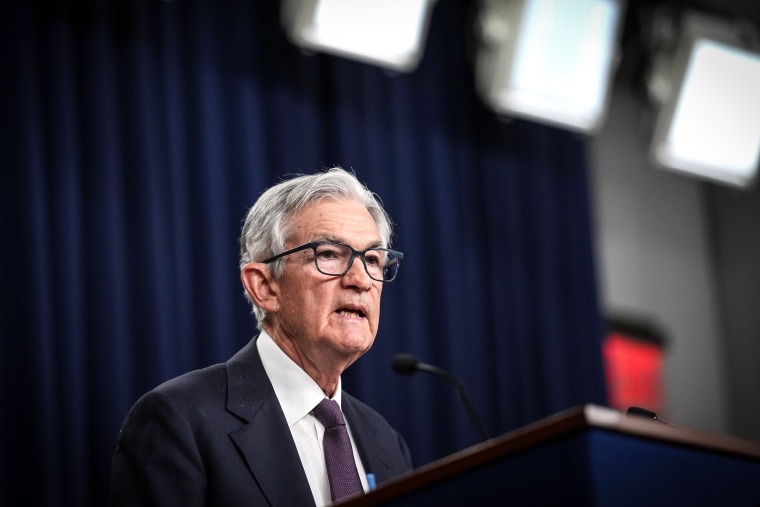The Federal Reserve said Wednesday it was leaving interest rates unchanged as it warned that the chances of both higher unemployment and higher inflation had climbed in the wake of President Donald Trump's tariffs plan.
In its latest assessment of the economy, the Fed did not cite the tariffs specifically but noted that volatile trade activity affected the economic data it relies on to make its policy decisions — a reference to the negative gross domestic product figure reported last week.
The central bank’s federal funds rate was kept at a target of 4.25% to 4.5%.
"We don't have to be in a hurry. The economy is resilient and doing fairly well," Fed Chair Jerome Powell said after the statement was released.
It said that while economic activity overall expanded at a decent pace and labor market conditions remained "solid," inflation is "somewhat elevated" and the risk of both higher unemployment and even higher inflation had risen.
In a note to clients, Omair Sharif, president of Inflation Insights consultancy, said the Fed "was pretty clear that the risks are now towards a stagflationary environment," as it also said uncertainty had increased “further” since its last meeting in April.
Stagflation occurs when the inflation rate climbs but overall economic growth slows or even falls.
Just before the Fed released its statement, Trump indicated he would not back down from his administration's current 145% tariff duties on China.
Powell said in his post-statement comments that inflation sparked by the tariffs could either end up being short-lived or long-lasting, depending on how high the tariffs get and how long they are in effect.
The rate is a benchmark for everything from auto loans to credit cards and personal loans. Their rates remain well above pre-pandemic levels, with credit card rates hovering at more than 21%. Auto loan interest rates have come down more substantially.

Home mortgage rates are less tied to the federal funds rate, instead closely tracking government borrowing costs, which have also remained elevated.
Investors believe the Fed will continue to hold interest rates steady through its next meeting in June, with the first cut of 2025 coming in July.
The central issue for the Fed is determining how much tariffs will affect price growth going forward. At least one Fed official believes any price boost from tariffs will be short-lived and has advocated to start rate cuts sooner.
That’s also how Trump appears to feel. While he has backed off the idea that he would fire Powell, he continued his call for lower interest rates after Friday’s jobs report, even though it showed the United States continued to add new jobs at a healthy clip.
But most other Fed officials believe the prudent move would be to wait on lowering interest rates until there is a more material deterioration in labor markets. And although the hiring rate has slowed dramatically, layoffs have been subdued.
“The best thing for them to do is wait to see: Do they have more of a problem with inflation or rising unemployment?” said Ed Yardeni, head of Yardeni Research consultancy, referring to the Federal Open Market Committee, which oversees monetary policy. “And the evidence so far is that, for now, it’s likely to be more of a cost problem than a labor-market problem.”
Yardeni said that he expects markets to remain “choppy” into the second half of the year but that Trump will eventually relent on his tariff gambit given the political calendar.
“Republicans can’t afford a recession with people upset about higher prices going into next year,” he said.
As for stocks, they are likely to remain around current levels barring a significant downturn, said Michael Antonelli, market strategist for Baird Private Wealth Management group. While the shock of Trump’s “Liberation Day” tariffs announcement has worn off, investors waiting on hopes of a comprehensive “deal” signed by Trump are likely to be waiting for some time.
Still, retail investors — as opposed to large institutions like pension or hedge funds — are likely to keep the market afloat. Data from Bank of America shows that even as hedge funds were net sellers, individual private clients have now been net buyers for 21 weeks, a record buying streak in its data history.
“It’s always the case that Americans will buy,” Antonelli said. “They need to retire. They don’t get as much press, but from my perspective, they’re the ones who are the most important market players these days.”
